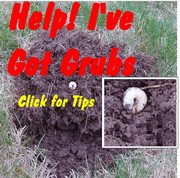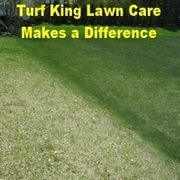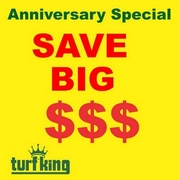During late August to September, many people report being bothered by large numbers of "giant mosquitoes". These are the adult European Crane fly. The native species has always been around, but natural enemies have kept its population in check and it is not seen in nuisance numbers.
The European Crane fly has fewer natural predators and diseases. The Crane fly normally associated with maritime climates. Up to now it has been a problem only in B.C. and Nova Scotia. Over the last few years, the European Crane fly has spread each year throughout southern Ontario. It is now a serious pest in some areas.
In the spring & summer many of the larvae (called leatherjackets) can be found in lawns. They have been reported in Ontario only in the last few years but can damage the lawn.
Leatherjackets resemble short worms They are thick-skinned without a distinct head. Although some people may refer to them as "grubs", they are actually maggots. These maggots are light grey to greenish brown in colour with a black back. Cylindrical in shape with a tapering at both ends, the legless bodies grow to about 2.5 centimetres (one inch) in length
.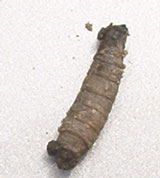
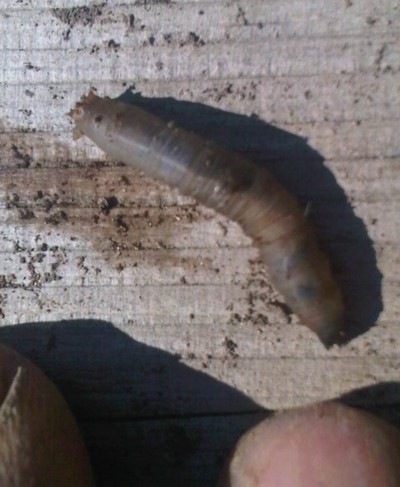
The Crane fly (adult of the species) resembles a large mosquito, but it doesn't bite or sting, The bodies range in length from 1 to 2 centimeters with somewhat longer legs. They spend a few sunny hours in the warm bricks or fences to mate and then lay eggs.
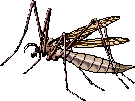
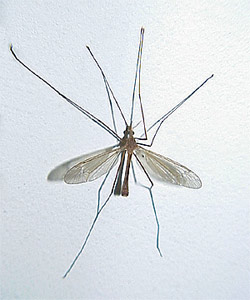
Leatherjackets will feed on the turf of golf courses, home lawns and pasture grass. During the day, they feed at or below the grass surface on root hairs, roots and crowns. At night, they feed above ground on crowns, stems and blades. Damage is most visible during the months of April and May. Irregular browning of the turf is the result of the pest having damaged the plant's crowns and eating away at the leaf blades. The larvae are often found after rain when they are washed out onto sidewalks, patios and driveways. Secondary damage may result from birds pecking away at the turf trying to reach the larvae.
April is the time to monitor for leatherjackets. Many report damage in May, but by then most of the damage has been done.
The adult Crane fly first makes its appearance about mid-September after emerging from a pupa stage. Almost immediately afterward eggs are laid, which hatch about 10-15 days later.
Newly hatched leatherjackets are found in the turf in late September or early October. They feed in the fall and grow rapidly. After overwintering, the larvae have tripled or quadrupled their weight by May. They continue to feed on the grass surface until mid-June at which time they move three to five centimeters into the soil. The leatherjackets enter a rest phase during the months of July and August. Turf damage is minimal during the summer.
By late August, the larvae pupate for about 2 weeks after which the adult emerges. The pupa casing is left behind leaving a clue to a potential problem.
Adults will migrate to the sides of buildings before beginning the lifecycle all over again.
Control the larvae to prevent damage to the lawn. Treatments can be applied in the fall or in the early spring. The adult is harder to control as it is a flying insect.
Animals may sometimes dig for Leatherjackets- Often there is a small hole that is fairly neat. Since leatherjackets don't destroy all the roots like white grubs do, the skunks or raccoons just lift out the leatherjacket and leave a nice hole. Fill the hole with some soil and grass seed if you like. Or just soil or just seed. Any option is better than nothing.
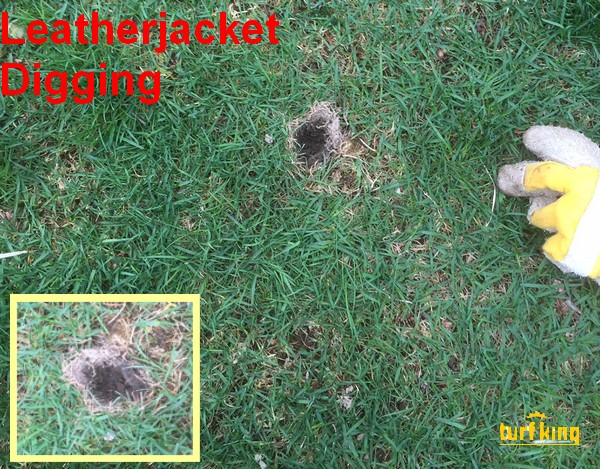
=====================
Here is a lawn we found with much Leatherjacket damage. Often the damage is more from the animals digging for a midnight snack than it is from the feeding due to the leatherjackets.




Severe damage can occur, but it's been a while since we've seen one as bad as this.








